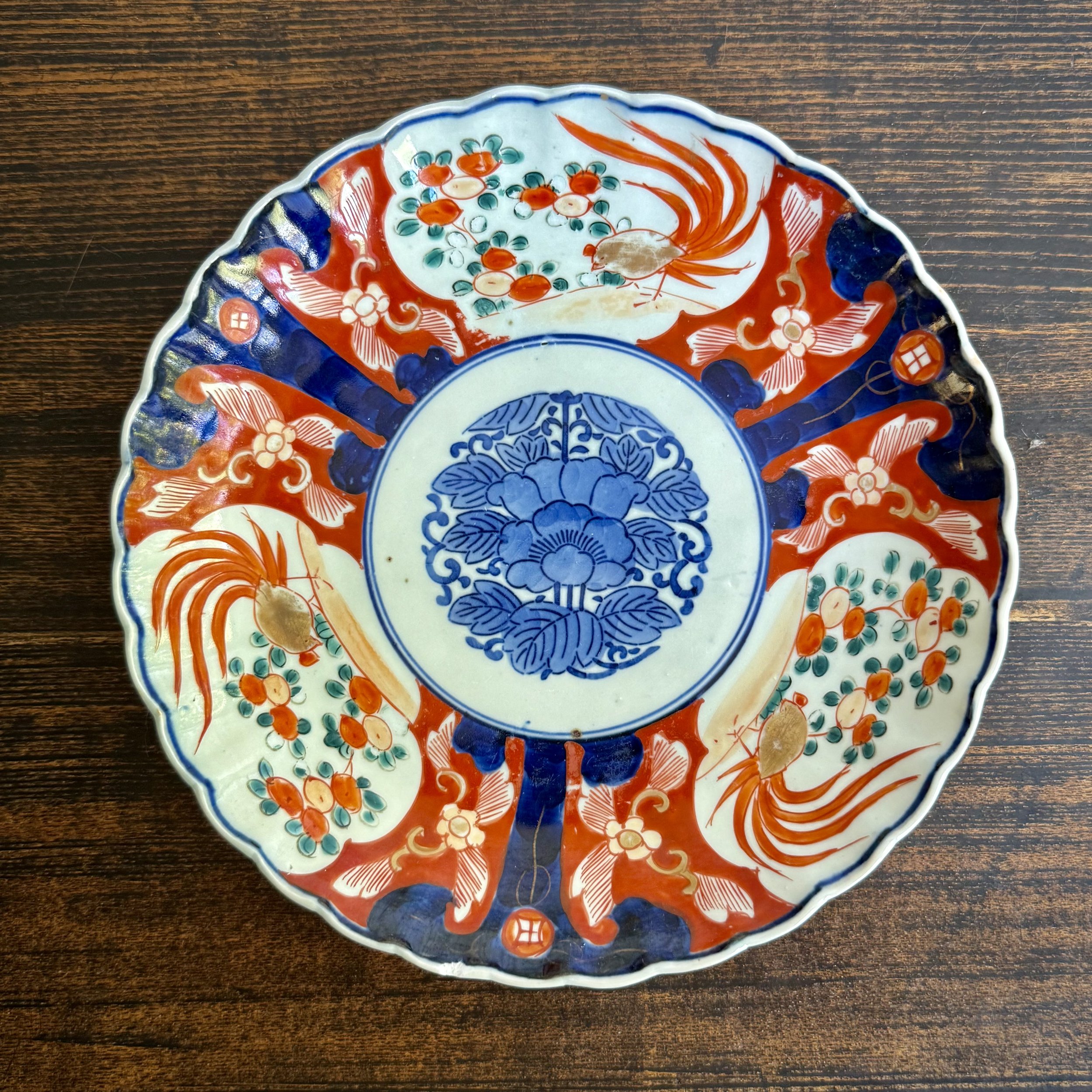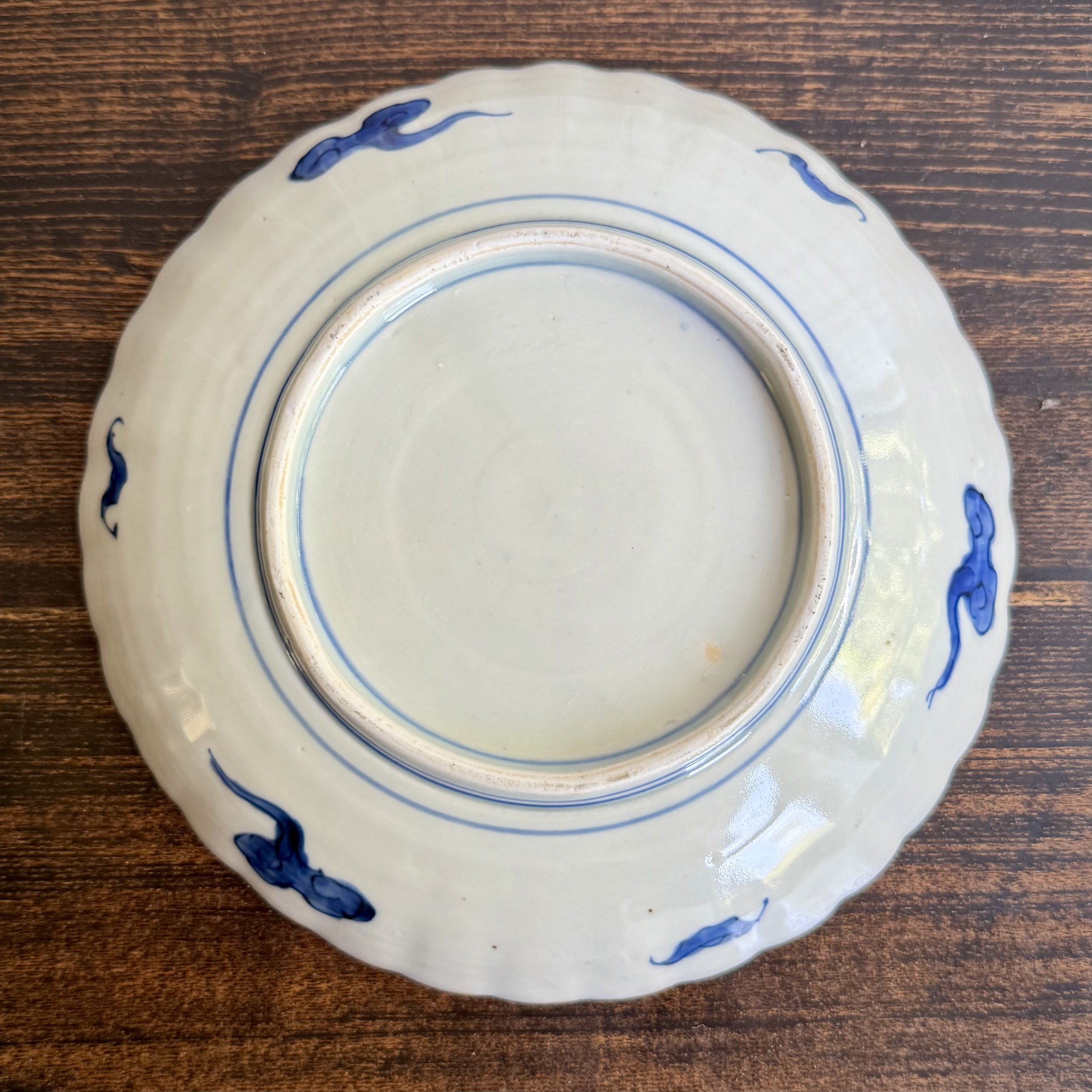 Image 1 of 2
Image 1 of 2

 Image 2 of 2
Image 2 of 2



Arita-yaki Plate
A lovely Arita-yaki plate (sometimes referred to as “Imari”). This style of porcelain developed in Japan during mid-Edo period (17th and 18th centuries), primarily as an export commodity. A confluence of factors created a new “china” industry in northern Kyushu at this time. Most important was the discovery of kaolin clay in the Arita area in 1616, by an expatriate Korean potter. Another was political instability in China itself, which interrupted production of Chinese porcelain, and caused the emigration of Chinese craftspeople to Japan. Finally, there was the arrival of the European traders eager for exotic wares — the Dutch East India Company in particular.
Arita-yaki is generally characterized by blue underglazing, with overglaze details in red and gold. Variations abound, however. Older pieces (kinrande) owe much to earlier Chinese designs, but with greater use of color, and other indigenous Japanese touches. The resumption of china production on the mainland during the Qing Dynasty led to a collapse in Arita production (Ironically, the Chinese now copied the wildly-popular Japanese interpretation of Chinese porcelain!). In the late 19th century (Meiji era), the pendulum swung back. Fascination with all things Japanese (“Japonisme”) raged in Europe and America, so the production of Japanese Imari enjoyed a resurgence.
A lovely Arita-yaki plate (sometimes referred to as “Imari”). This style of porcelain developed in Japan during mid-Edo period (17th and 18th centuries), primarily as an export commodity. A confluence of factors created a new “china” industry in northern Kyushu at this time. Most important was the discovery of kaolin clay in the Arita area in 1616, by an expatriate Korean potter. Another was political instability in China itself, which interrupted production of Chinese porcelain, and caused the emigration of Chinese craftspeople to Japan. Finally, there was the arrival of the European traders eager for exotic wares — the Dutch East India Company in particular.
Arita-yaki is generally characterized by blue underglazing, with overglaze details in red and gold. Variations abound, however. Older pieces (kinrande) owe much to earlier Chinese designs, but with greater use of color, and other indigenous Japanese touches. The resumption of china production on the mainland during the Qing Dynasty led to a collapse in Arita production (Ironically, the Chinese now copied the wildly-popular Japanese interpretation of Chinese porcelain!). In the late 19th century (Meiji era), the pendulum swung back. Fascination with all things Japanese (“Japonisme”) raged in Europe and America, so the production of Japanese Imari enjoyed a resurgence.